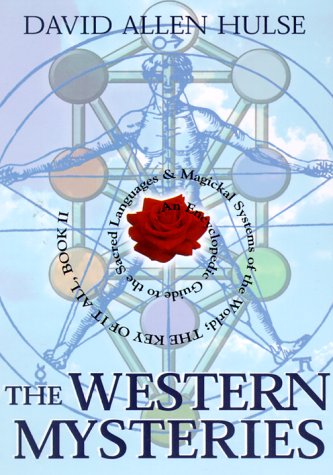
The Western Mysteries is the companion volume to the Eastern Mysteries and starts with the seventh key as the Eastern Mysteries ended with the sixth. In this thick book all the sacred number symbolism found in the Western mystery tradition is fully explored. Greek is given the lead chapter of this book, and with Hebrew represents the richest source for number symbolism in the West. Appended to this key is the number philosophy of Pythagoras, the father of modern numerology.
Coptic, which originated out of Egypt as the last language descending from the Egyptian Hieroglyphs, was modeled on the Greek use of alphabet letters as numbers. Two interesting sections beyond the code for Coptic deal with the ancient Egyptian Hieroglyphs. The Hieroglyphs were not a complete numerical language, like Cuneiform or Phoenician. But their shapes served as inspiration for the creation of the Phoenician alphabet (which is the proto-type for Hebrew). The connection between Egyptian Hieroglyphs, Phoenician, Ancient Greek and Ancient Rock Hebrew is shown, based on shapes of the letters rather than their phonetic values (which is the usual basis for comparison). A second table captures all the magical and symbolic meanings for the Egyptian Hieroglyphs, as recorded in Ancient Greece. These meanings are entirely different from the modern phonetic decipherment of the Hieroglyphs, and give the reader a glimpse of what magic may have been contained in these images for the Ancient World, beyond the mundane use as phonetic equivalents.
For Northern Europe, a completely different tradition of associating number and word came from the ancient tradition of the Celtic bards, those warrior-poets whose letters of the alphabet served as magical talismans. There are three distinct alphabet traditions for the Celtic lore of letters and numbers, and all three are fully documented in the 9th key. The Runes evolved in many different northern countries, and the 9th key shows the authentic rune tradition for the Germanic Elder Futhark, the Anglo-Saxon Futhork, the Younger Futhark of Danish, Norwegian, Swedish and Icelandic variants, and the Modern German Armanen runes of the twentieth century. So much fanciful and imaginative interpretations of these scripts have appeared in the last twenty year revival of shamanism and paganism, that I felt it necessary to go back to the little historical information that had survived and reconstruct the true meanings for the runes. The other two Celtic systems emanated out of Ireland and are both tied to the magic of trees. These two tree like alphabets are known as Beth-Luis-Nion and Ogham. Both are fully detailed in the appendix to the ninth key.
The tenth key reveals in great detail the separate number codes for the Latin alphabet. Although this was a very popular code in the Middle Ages in both Germany and Italy and may have had its roots in the Rosicrucian movement, it was not incorporated to the magical curriculum of Theosophy, the Golden Dawn, or the Ordo Templi Orientis. However, the teachings of Paul Foster Case utilized one of the famous Latin codes, known as the Cabala Simplex. The tenth key not only shows every number variant of Latin, but also fully details the Christian Cabala of Raymond Lull that used the enneagram as a nine-fold classification of the universe.
The eleventh key covers the artificial language of Enochian, which was discovered by the British mathematician John Dee in the sixteenth century. This key gives the Enochian numerical codes of John Dee, the Golden Dawn, and the work of Aleister Crowley. It also shows for the first time in print the true pattern behind the four Enochian watchtowers used in Golden Dawn Ritual work, and details all the magical symbolism for the Enochian alphabet in the Golden Dawn magical curriculum.
The twelfth key is one of the best expositions on the Tarot. It gives the beginning student the real divinatory meanings behind every modern Tarot deck. The confusion over the court cards is finally clarified. The connection between the Jewish Qabalah and the Golden Dawn esoteric Tarot system is outlined, as well as the alternate French Qabalistic scheme that leads the order of the Tarot as Hebrew alphabet letters as The Magician (rather than The Fool as with the Golden Dawn scheme). Also for the first time in print is a reconstruction of how S.L. MacGregor Mathers rediscovered the esoteric Qabalistic order for the Tarot. Finally the reader is offered a complete analysis of all the Qabalistic clues hidden in the unique designs of the most popular Tarot deck in the world (the Rider-Waite deck).
The thirteenth and final key reveals a Qabalistic pattern for English, found first in the writings of the original Rosicrucians and then later in the cryptic book by Aleister Crowley, The Book of the Law.
There is also a very detailed introduction to this second volume that spans over 100 pages. Topics that are discussed in this introduction include the lost word of Freemasonry, the ancient Aztec and Mayan 20 day count system, the lore of the elements, the planets and the zodiac in archaic Western Astrology, and the Arabic divinatory system known as Geomancy.
The newest editions of both of the volumes in The Key of it All series now include workable indexes as well.